Themed collection Chemistry of 2D materials: graphene and beyond

Introduction to ‘Chemistry of 2D materials: graphene and beyond’
Paolo Samorì, Xinliang Feng and Vincenzo Palermo introduce the Nanoscale themed collection on ‘Chemistry of 2D materials: graphene and beyond’.

Nanoscale, 2020,12, 24309-24310
https://doi.org/10.1039/D0NR90263B
Graphene glial-interfaces: challenges and perspectives
This work provides an overview of the emerging literature on the interaction of graphene-based materials with glial cells, aiming to define the challenges and perspectives of graphene glial-interfaces.
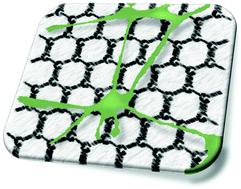
Nanoscale, 2021,13, 4390-4407
https://doi.org/10.1039/D0NR07824G
Chemical and electrochemical synthesis of graphene oxide – a generalized view
This is a tutorial review based on the laboratory experience on the synthesis of graphene oxide using chemical and electrochemical methods.
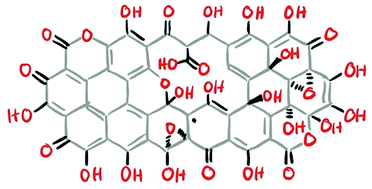
Nanoscale, 2020,12, 12731-12740
https://doi.org/10.1039/D0NR02164D
Growth and in situ characterization of 2D materials by chemical vapour deposition on liquid metal catalysts: a review
In this review we highlight the recent progress in 2DM growth on LMCat, which in combination with in situ characterization presents a viable and large-scale sustainable direction that has the prospect of achieving defect-free 2D materials.
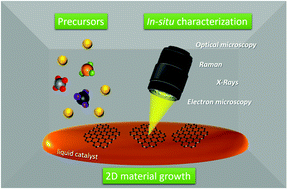
Nanoscale, 2021,13, 3346-3373
https://doi.org/10.1039/D0NR07330J
Synthesis of emerging 2D layered magnetic materials
van der Waals atomically thin magnetic materials have been recently discovered.

Nanoscale, 2021,13, 2157-2180
https://doi.org/10.1039/D0NR07867K
Mechanics of free-standing inorganic and molecular 2D materials
This review summarizes recent progress in the mechanical characterization of two-dimensional materials, as exemplified by an AFM-based analysis of 1 nm thick carbon nanomembranes (helium ion microscope image scale bar: 50 μm).
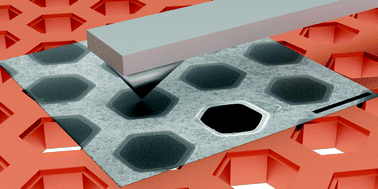
Nanoscale, 2021,13, 1443-1484
https://doi.org/10.1039/D0NR07606F
Dispersant-assisted liquid-phase exfoliation of 2D materials beyond graphene
Dispersant-assisted liquid-phase exfoliation allows the production of a wide range of water-based 2D material dispersions. This review provides an overview on this production method and also gives some perspectives on future research directions.
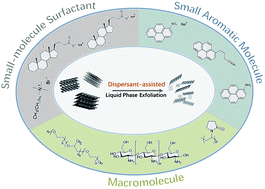
Nanoscale, 2021,13, 460-484
https://doi.org/10.1039/D0NR05514J
Large-area synthesis of transition metal dichalcogenides via CVD and solution-based approaches and their device applications
This article reviews the latest advances in the synthesis of wafer-scale thin films using chemical vapor deposition and solution-based methods and various device applications.
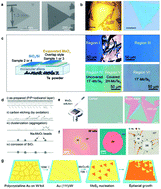
Nanoscale, 2021,13, 615-633
https://doi.org/10.1039/D0NR08071C
Swelling properties of graphite oxides and graphene oxide multilayered materials
Swelling defines graphite oxides and multilayered graphene oxides. It is a key property of GO in applications which involve sorption from vapors, immersion into liquid water or polar solvents and solution based chemical reactions.
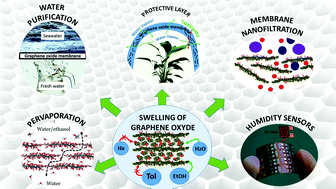
Nanoscale, 2020,12, 21060-21093
https://doi.org/10.1039/D0NR04931J
Recent advances in ultrathin two-dimensional materials and biomedical applications for reactive oxygen species generation and scavenging
ROS play an important role physiological processes. Two dimensional materials possess ROS scavenging performance in dark or ROS generation ability under light stimuli. This review providing an overview of 2D materials in ROS related field.
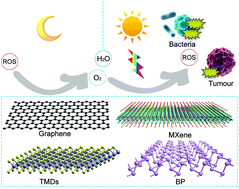
Nanoscale, 2020,12, 19516-19535
https://doi.org/10.1039/D0NR05746K
Recent advancement in biomedical applications on the surface of two-dimensional materials: from biosensing to tissue engineering
This review highlights the importance of the dimensionality and surface interactions of 2D materials with examples of recent biosensing and biomedical applications.
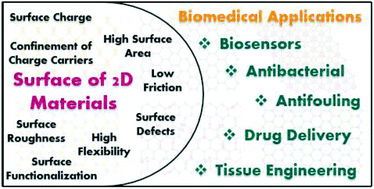
Nanoscale, 2020,12, 19043-19067
https://doi.org/10.1039/D0NR05287F
Functional inks and extrusion-based 3D printing of 2D materials: a review of current research and applications
Graphene and related 2D materials offer an ideal platform for next generation disruptive technologies and in particular the potential to produce printed electronic devices with low cost and high throughput.
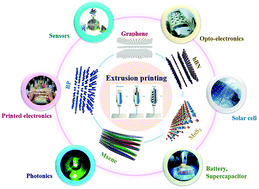
Nanoscale, 2020,12, 19007-19042
https://doi.org/10.1039/D0NR04933F
Graphene-based carbocatalysts for carbon–carbon bond formation
Carbon-based catalysts for carbon–carbon bond formation reactions.
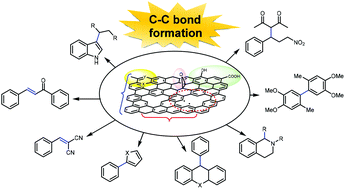
Nanoscale, 2020,12, 12210-12227
https://doi.org/10.1039/D0NR02984J
Towards large-scale graphene transfer
The transfer process is crucial for obtaining high-quality graphene for its large-scale industrial application.
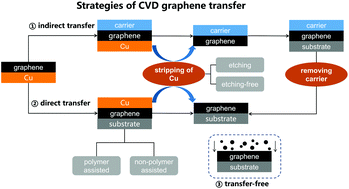
Nanoscale, 2020,12, 10890-10911
https://doi.org/10.1039/D0NR01198C
Peculiar piezoelectricity of atomically thin planar structures
The real realm and recent advances of piezoelectricity after thinning down to two-dimensional materials have been introduced.
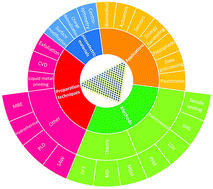
Nanoscale, 2020,12, 2875-2901
https://doi.org/10.1039/C9NR08063E
Carbon supported noble metal nanoparticles as efficient catalysts for electrochemical water splitting
Due to an increasing requirement of clean and sustainable hydrogen energy economy, it is significant to develop new highly effective catalysts for electrochemical water splitting.
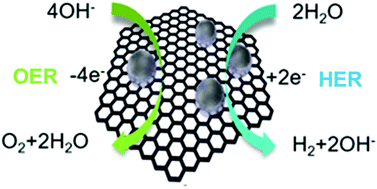
Nanoscale, 2020,12, 20165-20170
https://doi.org/10.1039/D0NR05659F
Electrochemical delamination assisted transfer of molecular nanosheets
Electrochemical delamination assisted transfer is reported for molecular nanosheets covalently bonded to the synthesis substrates. The non-destructive transfer method can be applied to a variety of organic nanosheets grown on conductive substrates.
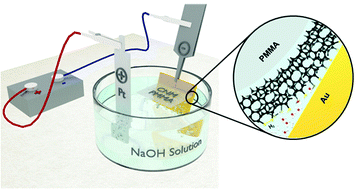
Nanoscale, 2020,12, 8656-8663
https://doi.org/10.1039/D0NR01084G
Free-standing electrochemically coated MoSx based 3D-printed nanocarbon electrode for solid-state supercapacitor application
Room temperature electrochemical deposition of transition metal chalcogenide (MoSx) on 3D-printed nanocarbon fibers based electrodes for custom shaped solid-state supercapacitor.
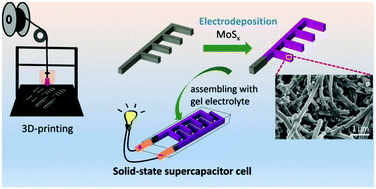
Nanoscale, 2021,13, 5744-5756
https://doi.org/10.1039/D0NR06479C
Local electrochemical activity of transition metal dichalcogenides and their heterojunctions on 3D-printed nanocarbon surfaces
MoS2 and WS2 and their heterojunctions are used to modify thermally activated 3D-printed nanocarbon structures. Herein, the local electrochemical performance for HER of the modified structures is demonstrated by scanning electrochemical microscopy.
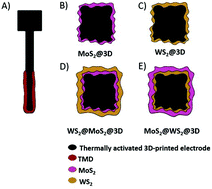
Nanoscale, 2021,13, 5324-5332
https://doi.org/10.1039/D0NR06679F
Incorporation-limiting mechanisms during nitrogenation of monolayer graphene films in nitrogen flowing afterglows
Modification of graphene films in the flowing afterglow of microwave N2 plasmas. Nitrogenation is first limited by the formation of defect sites by plasma-generated N and N2(A) at low damage and then by the adsorption of nitrogen atoms at high damage.
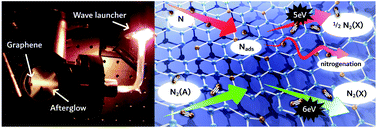
Nanoscale, 2021,13, 2891-2901
https://doi.org/10.1039/D0NR07827A
Electrochemically controlled cleavage of imine bonds on a graphene platform: towards new electro-responsive hybrids for drug release
Graphene-based materials are particularly suitable platforms for the development of new systems able to release drugs upon the application of controlled electrochemical stimuli.
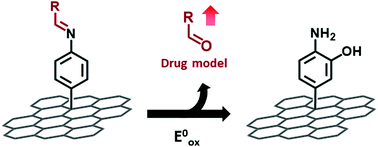
Nanoscale, 2020,12, 23824-23830
https://doi.org/10.1039/D0NR04102E
Iron nanoparticle templates for constructing 3D graphene framework with enhanced performance in sodium-ion batteries
This study examines the synthesis and electrochemical performance of three-dimensional graphene for Li-ion batteries and Na-ion batteries.
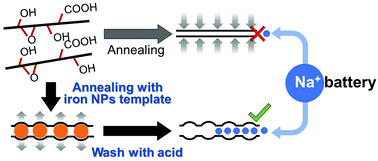
Nanoscale, 2020,12, 21780-21787
https://doi.org/10.1039/D0NR05682K
Tungsten nitride-coated graphene fibers for high-performance wearable supercapacitors
Transition metal nitrides can endow graphene fibers with both high conductivity and high capacitance to achieve high-performance fiber supercapacitors.

Nanoscale, 2020,12, 20239-20249
https://doi.org/10.1039/D0NR06636B
Tailoring capacitance of 3D-printed graphene electrodes by carbonisation temperature
The carbonisation temperature has shown to be a key activation parameter to modulate the capacitive performance of graphene-based 3D-printed nanocomposite electrodes.
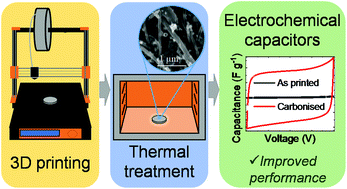
Nanoscale, 2020,12, 19673-19680
https://doi.org/10.1039/D0NR04864J
Vibrational signature of the graphene nanoribbon edge structure from high-resolution electron energy-loss spectroscopy
A combined experimental and theoretical investigation of the vibrational signatures of on-surface synthesized graphene nanoribbons demonstrates the potentiality of HREELS in disclosing the details of their edge structure.
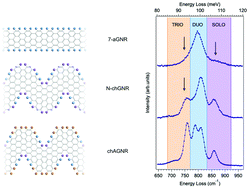
Nanoscale, 2020,12, 19681-19688
https://doi.org/10.1039/D0NR05763K
Reduced graphene oxide–silsesquioxane hybrid as a novel supercapacitor electrode
Modified polyhedral oligosilsesquioxane (POSS) is used to improve the electrochemical performance of reduced graphene oxide (rGO) through the enhancement of porosity and the extension of interlayer space allowing effective electrolyte transport.
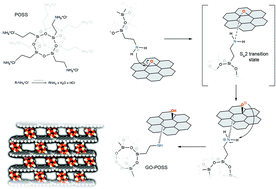
Nanoscale, 2020,12, 18733-18741
https://doi.org/10.1039/D0NR05226D
Is carboxylation an efficient method for graphene oxide functionalization?
We investigated the carboxylation of graphene oxide using chloroacetic acid and different amounts of NaOH. Increase of carboxyl groups was observed only at high amounts of NaOH, but partial reduction attenuates the yield of further functionalization.

Nanoscale Adv., 2020,2, 4085-4092
https://doi.org/10.1039/D0NA00561D
Superhydrophobic graphene-coated sponge with microcavities for high efficiency oil-in-water emulsion separation
We present a graphene-coated sponge for high flux and high efficiency oil-in-water emulsion separation through superhydrophobic microcavities.
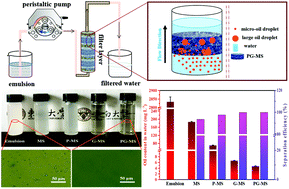
Nanoscale, 2020,12, 17812-17820
https://doi.org/10.1039/D0NR04892E
Iodide mediated reductive decomposition of diazonium salts: towards mild and efficient covalent functionalization of surface-supported graphene
We present an efficient and straightforward covalent functionalization protocol for modification of surface supported graphene and graphite using aqueous reagents.
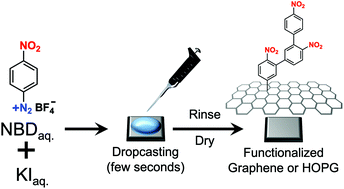
Nanoscale, 2020,12, 11916-11926
https://doi.org/10.1039/D0NR03309J
Stimuli-responsive graphene-based hydrogel driven by disruption of triazine hydrophobic interactions
The study reported here concerns the preparation of a novel graphene-diaminotriazine (G-DAT) nanocomposite hydrogel for application in the drug delivery field.
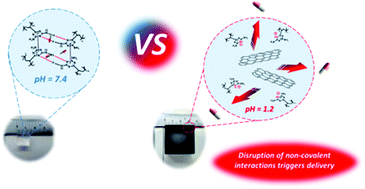
Nanoscale, 2020,12, 7072-7081
https://doi.org/10.1039/C9NR10588C
About this collection
Guest Edited by Professor Paolo Samorì (Université de Strasbourg, France), Professor Xinliang Feng (Technische Universität Dresden, Germany), and Professor Vincenzo Palermo (Chalmers University of Technology, Sweden, and Consiglio Nazionale delle Ricerche, Italy).
This collection is focussed on the use of chemical approaches to graphene and related materials towards improved production (quality and quantity) as well as controlled functionalization in order to harness the material's fundamental properties and enhanced performance in applications in the fields of opto-electronics, energy, biomedics and sensing.